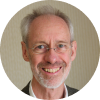Preliminary Program
Workshops & Teaching Course
| WORKSHOP DAY 1 | September 10th 2024 | |||
|---|---|---|---|---|
| Time Schedule | Room 1 | Room 2 | Room 3 | Room 4 |
| 08.00 - 12.00 | EEG Basic Course | Neuromodulation | Basic NCS-EMG Teaching Course | Basic PSG Teaching Course |
| 13.00 - 17.00 | EEG Advanced Course | Advanced NCS-EMG SFEMG Teaching Course | Nerve and Muscle Hyperexcitability Course | |
| WORKSHOP DAY 2 | 11 September 2024 | |||
|---|---|---|---|---|
| Time Schedule | Room 1 | Room 2 | Room 3 | Room 4 |
| 08.00 - 12.00 | Continuous EEG monitoring: patterns, analysis, treatment, and implementation | Basic IONM Course | NMUS Workshop | EMG and EP in Pediatric Course |
| 13.00 - 17.00 | Advanced IONM Course | EEG in Neonatal and Children | ||
| Topic | Speaker |
|---|---|
| Basic principles and Normal Adult EEG | Lynn Liu (USA) |
| Normal EEG Variants | Suryani Gunadharma (Indonesia) |
| Artifacts | Ricardo Kienitz (Germany) |
| Abnormal Adult EEG: Epileptiform abnormalities | Kheng Seang Lim (Malaysia) |
| Abnormal Adult EEG: Non-Epileptiform abnormalities | Peter Kaplan (USA) |
| How to analyze EEG with Advance methods | Eishi Asano (USA) |
| Discussion | |
“Epilepsy Surgery: Ictal Semiology - Pre-surgery Evaluation”
| Topic | Speaker |
|---|---|
| Semiology and Ictal EEG of Temporal Lobe Epilepsy | John Dunne (Australia) |
| Semiology and Ictal EEG of Frontal Lobe Epilepsy | Suryani Gunadharma (Indonesia) |
| Epileptic Zone: Definition and Concept (How to determine epileptic zone) | Aatif Husain (USA) |
| Multimodality neuroimaging evaluation in focal epilepsy | Niels Focke (Germany) |
| Intracranial EEG monitoring | Margita Seeck (Switzerland) |
| Case Discussion | Aris Catur Bintoro (Indonesia) |
| Topic | Speaker |
|---|---|
| Indications for cEEG monitoring | Astri Budikayanti (Indonesia) |
| Periodic and rhythmic discharges | Michael Fong (Australia) |
| Epileptic Zone: Definition and Concept (How to determine epileptic zone) | John Dunne (Australia) |
| Ictal-interictal continuum | Michael Fong (Australia) |
| Quantitative EEG primer | M Brandon Westover (USA) |
| SE treatment calculus | Aatif Husain (USA) |
| Treatment of SE in resource limited setting | Fitri Octaviana (Indonesia) |
| Cardiac arrest: patterns and treatment considerations | Michel J.A.M van Putten (Netherlands) |
| Implementing cEEG in resource limited settings | Astri Budikayanti (Indonesia) |
| ICU EEG cases | Adrian Ridski Harsono (Indonesia) |
| Topic | Speaker |
|---|---|
| Localize the hotspot; measurement of Central motor conduction studies and clinical utilities | Hideyuki Matsumoto (Japan) |
| Peripheral motor conduction studies and clinical utilities. Cauda equina conduction time | Hideyuki Matsumoto (Japan) |
| Short interval intracortical inhibition (SICI) | Ritsuko Hanajima (Japan) |
| Cerebellar motor cortical inhibition | Takenobu Murakami (Japan) |
| Group Demonstration | |
| Cases/ Q&A Session | |
| Theta burst stimulation (TBS) | Amanda Tiksnadi (Indonesia) |
| Quadripulse stimulation | Ritsuko Hanajima (Japan) |
| Static magnetic stimulation (SMS) | Robert Chen (Canada) |
| Transcranial direct and alternating current stimulation (tDCS, tACS) | Franca M Tecchio (Italy) |
| Transcutaneous auricular vagal nerve stimulation (taVNS) | Yasuo Terao (Japan) |
| Robotic TMS | Adrianna Giuffre (Canada) |
| Group Demonstration | |
“Hands-on Teaching Course on Conventional Nerve Conduction Studies and Electromyography
| Topic | Speaker |
|---|---|
| Basic principles and pitfalls of NCS | Umapathi N Thirugnanam (Singapore) |
| NCS of common nerves | Hans Damian (Philippines) |
| Late responses | David Burke (Australia) |
| Repetitive nerve stimulation | Sanjeev Nandedkar (USA) |
| Basic principals of electromyography | Devon Rubin (USA) |
| Methods of reference values in NCS and EMG | Sanjeev Nandedkar (USA) |
| Hands-On | |
“Hands-on Teaching Course on Conventional Nerve Conduction Studies, Electromyography, and single-fiber Electromyography”
| Topic | Speaker |
|---|---|
| Electrodiagnosis of plexopathies | Jorgee Guiterrez (Colombia) |
| NCS of uncommon nerves including phrenic and cranial | Nens van Alfens (Netherlands) |
| Single fiber EMG | Masahiro Sonoo (Japan) |
| Laryngeal EMG | Paulo Kimaid (Brazil) |
| Quantitative EMG in neurogenic and myopathic conditions | Sanjeev Nandedkar (USA) |
| Atypical EMG wavefroms - case discussions | Devon Rubin (USA) |
| Hands-On / Discussion | |
| Topic | Speaker |
|---|---|
| Basic principal of PSG: recording, technical specification in PSG | Nushrotul Lailiyya (Indonesia) |
| Electrode placement | Zamroni Afif (Indonesia) |
| Sleep staging and arousal | Tripath Deep Singh (India) |
| Respiration and limb movement scoring | Rimawati Tedjasukmana (Indonesia) |
| PSG interpretation | Tayard Desudchit (Thailand) |
| Cases/ Q&A Session | |
| Topic | Speaker |
|---|---|
| Introduction to Axonal Excitability Testing and the TROND protocols | James Howells (Australia) |
| Demonstration of the nerve excitability (TROND) protocol | James Howells (Australia) |
| Axonal Excitability – Clinical Application and effects of drug action | Martin Koltzenburg (United Kingdom) |
| MScan MUNE – Introduction and Clinical Application | Jose Manuel Matamala (Chile) |
| Demonstration of MScan MUNE | Jose Manuel Matamala (Chile) |
| Muscle Excitability – Introduction and Clinical Application | Karl Ng (Australia) |
| Demonstration of Muscle Excitability | Karl Ng (Australia) |
| Topic | Speaker |
|---|---|
| SEP monitoring | Jorgee Guiterrez (Colombia) |
| MEP monitoring | Aatif Husain (USA) |
| BAEP monitoring | Kyung Seok Park (South Korea) |
| Cranial and spinal EMG monitoring | Paulo Kimaid (Brazil) |
| Anesthesia effect on IOM | Ahmad Yanuar (Indonesia) |
| Discussion & closing | |
| Topic | Speaker |
|---|---|
| Language Mapping | Marc Nuwer (USA) |
| Monitoring reflexes (blink, LSR, BCR, etc.) | Ana Mirallave-Pescador (United Kingdom) |
| Spinal dorsal column mapping and corticospinal tract monitoring | Marc Nuwer (USA) |
| Cranial corticospinal tract mapping and monitoring | TBA |
| Interactive IOM case discussion | Lo Yew Long (Singapore) |
| Discussion & closing | |
| Topic | Speaker |
|---|---|
| Introduction to NMUS and Basic of Ultrasound Scanning | Ana Lucila Moreira (Brazil) |
| Median and Ulnar Nerve Scan | Byung-Jo Kim (South Korea) |
| Entrapment Neuropathies | Rivan Danuaji (Indonesia) |
| TBA | Michael Cartwright (USA) |
| Nerve Ultrasound in inflammatory neuropathy | Stephan Goedee (Netherlands) |
| Nerve ultrasound in traumatic nerve injury | Nens van Alfen (Netherlands) |
| Hands-On Practice: Median-Ulnar anda Brachial Plexus Nerve | |
| Diapraghm Scan | Nens van Alfen (Netherlands) |
| Sciatic, fibular and tibial nerve scan | Eman Tawfik (Egypt) |
| Entrapment of the sciatic, fibular and tibial nerves | Eman Tawfik (Egypt) |
| Ultrasound for ALS assessment | Mingsheng Liu (China) |
| Hands-On Practice: Sciatic, Fibular, Tibial Nerves and Diapraghm Scan | |
| TBA | Michael Cartwright (USA) |
| Muscle anatomy forearm, lower leg, thigh, arm, shoulder demo | Nens van Alfen (Netherlands) |
| US for myopathy assessment | Ana Lucila Moreira (Brazil) |
| Hands-On: Muscle US | Rivan Danuaji (Indonesia) |
| Topic | Speaker |
|---|---|
| Focused nerve conduction studies and EMG in children | TBA |
| Electrodiagnostic approach of neuropathy in children | Jacquie Deeb (United Kingdom) |
| Electrodiagnostic approach of myopathy in children | Yann Péréon (France) |
| Neuromuscular junction assessment in pediatric patient | TBA |
| Electrodiagnostic Approach in Pediatric Brachial Plexus Palsies | Ruth Van der Looven (Belgium) |
| Evoked Potential technique and applications in pediatric patients | Philip J Broser (Switzerland) |
| Clinical application of electrodiagnosis in pediatric neuromuscular disorders: interactive case discussion | Amanda Soebadi (Indonesia) |
| Topic | Speaker |
|---|---|
| Maturation of EEG: from neonatal period to childhood and adolescent | Natrujee Wiwattanadittakul(Thailand) |
| Normal EEG in infants and children | Derrick Chan (Singapore) |
| EEG and treatment in Epilepsy Syndrome in neonate and infants | Natrujee Wiwattanadittakul (Thailand) |
| EEG and treatment in Epilepsy Syndrome in Children | Betul Baykan (Turkey) |
| EEG monitoring in the neonatal ICU- indications and techniques | Derrick Chan (Singapore) |
| EEG monitoring in Critically Ill Children | Kollecheri P Vinayan (India) |
| Quantitative EEG | Eishi Asano (USA) |
Symposia
Plenary Lectures Speakers
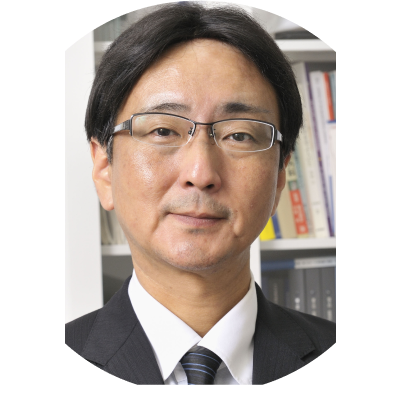
Nerve conduction block and safety factor for impulse transmission: clinical application

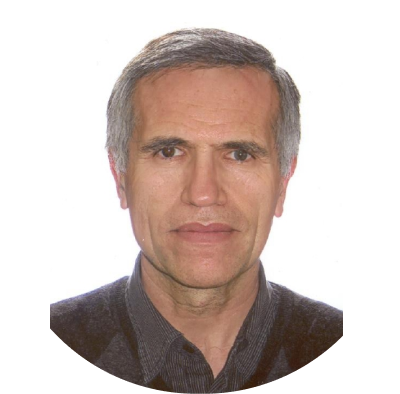
On voluntary actions and reflex reactions

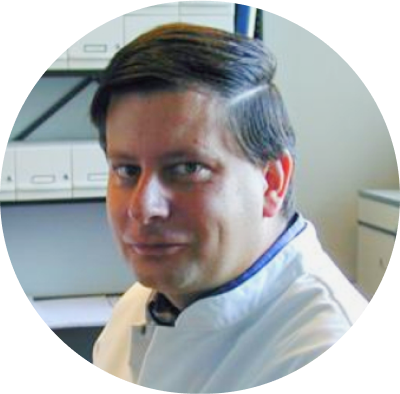
The Clinical Neurophysiology of Brain Networks: towards an integrated view on brain disease
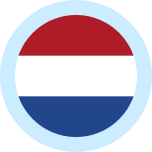
- TMS-EEG reliability in clinical researchUlf Ziemann (Germany)
- Deep TMS-EEG as a diagnostic and prognostic biomarker in EpilepsyVasilios K Kimiskidis (Greece)
- Investigating the effect of behaviour on TMS Evoked Potential (TEP) and its variabilityNivethida Thirugnanasambandam (India)
- Neuromodulation and Neural plasticity: reviewWalter Paulus (Germany)
- Motor Cortical Plasticity study using TMSRitsuko Hanajima (Japan)
- Transcranial direct current stimulation and neural plasticityFranca M Tecchio (Italy)
- Non-invasive cerebellar stimulation in humans: Cerebellar Inhibition (CBI)Yoshikazu Ugawa (Japan)
- Cerebellar DBS: reviewRobert Chen (USA)
- Cerebellar DBS for tremor and dystoniaShiro Horisawa (Japan)
- Movement related potentials (MRPs): non-invasive electrophyisiological study of the acitvity of the cerebellum and cerebrumJames Colebatch (Australia)
- Non-invasive Brain Stimulation and EEG: A Window into the Cortical Mechanisms of Movement DisordersNivethida Thirugnanasambandam (India)
- Bereitschaftpotential in Multiple System AtrophyMing-Kuei Lu (Taiwan)
- Reliability of robotic transcranial magnetic stimulation motor mapping.Adrianna Giuffre (Canada)
- Robotic TMS: automatic measures of the motor hot point, motor threshold, and SICIMitsuaki Takemi (Japan)
- Comparison between handheld TMS and robotic TMSYoshikazu Ugawa (Japan)
- In vitro experiment: astrocyte activation requisite for long-lasting suppression of neural activityTatsuya Mishima (Japan)
- Safety guidelines for human experiments: experts consensusTakahiro Osada (Japan)
- Bidirectional motor cortical modulation by Transcranial Ultrasound Stimulation (TUS) in humansYoshikazu Ugawa (Japan)
- Effectiveness of neurofeedback training in motor performanceMitsuaki Takemi (Japan)
- Transcranial alternating current stimulation targeting oscillations and inducing inter-cortical connectivity plasticity for the treatment of neuropsychiatric disorders.Michael A Nitsche (Germany)
- Non-invasive brain stimulation in substance use disorderVincent P Clark (USA)
- Close-Loop modulated transcranial electric stimulation (tES) to enhance learning in wakefulness and sleepMichael A Nitsche (Germany)
- Non-invasive brain stimulation techniques and sleep disordersGiuseppe Lanza (Italy)
- Close-Loop modulated transcranial electric stimulation (tES) to enhance learning in wakefulness and sleepVincent P Clark (USA)
- Approach to cognitive decline using non-invasive brain stimulationTakenobu Murakami (Japan)
- Transcranial magnetic stimulation as a tool in exploring the effect of thalamotomy via MR-guided focused ultrasoundMing-Kuei Lu (Taiwan)
- Stimulating language performance after rTMS: speech arrest induction and its utility to alter language performance of post stroke aphasiaAmanda Tiksnadi (Indonesia)
- Effects of STN DBS on eye movementsYasuo Terao (Japan)
- DBS of the Forel's Field for DystoniaShiro Horisawa (Japan)
- Navigated TMS for mapping motor and language corticesVasilios K Kimiskidis (Greece)
- Deep brain stimulation in central post-stroke pain syndromePrasad Shirvalkar (USA)
- Individualized treatment of motor stroke: A perspective on open-loop, closed-loop and adaptive closed-loop brain state dependent TMS.Ulf Ziemann (Germany)
- Standard Neurophysiology in chronic pain patients: what information can we get?Caterina Leone (Italy)
- Modality specific evoked-potentials in neuropathic pain conditions: trial and error from the laboratory or clinically applicable?Julia Forstenpointner (Germany)
- Pain symptoms ‘sine materia’: malingering, factitious, dissociative? Clinical neurophysiology of falsehoodLuis Garcia-Larrea (France)
- Mechanisms of Neuropathic Pain and Patient Stratification in Neuropathic Pain TrialsJan Rosner (Denmark)
- Personalizing Deep Brain Stimulation for Refractory Neuropathic Pain- Mechanism and TherapyPrasad Shirvalkar (USA)
- Promoting Spinal and Brain Plasticity using Non-Invasive Neuromodulatory Approaches after Spinal Cord Injury – Implications for Sensorimotor Recovery and PainSylvia Gustin (Australia)
- Central mechanism of pain modulationJulia Forstenpointner (Germany)
- Non-invasive cortical stimulation for drug-resistant painLuis Garcia-Larrea (France)
- Non-invasive Neuromodulation for Spinal Cord Injury Neuropathic PainSylvia Gustin (Australia)
- Physiological basis of muscle tone in humansJohn Rothwell (United Kingdom)
- Clinical and pathophysiological features of rigidity in Parkinson' s diseaseJinyoung Youn (South Korea)
- Neurophysiological and biomechanical tools for objective measurement of rigidity in Parkinson's diseaseAntonio Suppa (Italy)
- Gait Analysis: Translating neurophysiological data into clinical PracticeJinyoung Youn (South Korea)
- Differential Diagnosis Hyperkinetic movement disorder based on neurophysiologyPattamon Panyakew (Thailand)
- Neurophysiology of brain stimulation in movement disorderJohn Rothwell (United Kingdom)
- Applied Neurophysiology in DystoniaAntonio Suppa (Italy)
- Clinical Features Pathophysiology, treatment and controversies tremor in dystoniaPattamon Panyakew (Thailand)
- Myoclonus: pathophysiology and treatmentRobert Chen (Canada)
- Hand movement analysis for differentiating MCI due to Alzheimer’s diseaseAnita Kamondi (Hungary)
- Differential diagnosis of memory loss and their neurophysiologic hallmarkClaudio Babiloni (Italy)
- ALS -emerging concepts in ALSNortina Shahrizaila (Malaysia)
- The role of electrophysiology and imaging in the diagnostic criteria of ALSJose Manuel Matamala (Chile)
- Recognising mimics in ALSDevon Rubin (USA)
- Threshold tracking transcranial magnetic stimulationMartin Koltzenburg (United Kingdom)
- Axonal excitability testing with threshold trackingJames (Tim) Howells (Australia)
- Motor unit number estimation methodsHatice Tankisi (Denmark)
- Diagnostic approach to (non-inflammatory) peripheral neuropathiesMathew Alexander (Brunei)
- The role of neurophysiology and imaging techniques in the evaluation of peripheral neuropathiesStephan Goedee (The Netherlands)
- Making sense of excitability studies in peripheral neuropathiesDavid Burke (Australia)
- POEMS and other paraproteinaemin neuropathiesSatoshi Kuwabara (Japan)
- Overview of infectious neuropathiesMathew Alexander (Brunei Darussalam)
- Brachial neuritis - diagnostic, evaluation and managementNens van Alfen (Netherlands)
- Recent advances in myasthenia gravisManfaluthy Hakim (Indonesia)
- Electrodiagnostic apporach to neuromuscular junction disordersMasahiro Sonoo (Japan)
- Neurophysiological biomarkers in myopathiesHatice Tankisi (Denmark)
- Overview of diabetic neuropathyHans Damian (Phillippines)
- Small-fibre neuropathyUmapathi N Thirugnanam (Singapore)
- Conventional and novel methods in evaluating small fibre neuropathiesCaterina Leone (Italy)
- Introduction optic nerve ultrasoundEman Tawfik (Egypt)
- Facial and vagus nerve ultrasoundMingsheng Liu (China)
- Spinal accessory and hypoglossus nerve ultrasoundMichael Cartwright (USA)
- Update on guideline in GBS and CIDPNortina Shahrizaila (Malaysia)
- Differentiating between the spectrum of immune-mediated demyelinating neuropathyLo Yew Long (Singapore)
- Considering outcome variabilities in CIDPStephan Goedee (The Netherlands)
- Neuromuscular ultrasound in inflammatory neuropathiesAna Lucila Moreira (Brazil)
- Scanning protocols and guidelines for inflammatory neuropathiesByung-Jo Kim (South Korea)
- Interactive case discussion on inflammatory neuropathiesEman Tawfik (Egypt)
- REM physiology and pathology in circadian rhythmNushrotul Lailiyya (Indonesia)
- Sleep physiology and dysautonomia in REM sleepTripat Deep Singh (India)
- REM sleep behavior Disorder: Mimics and VariantsManvir Bathia (India)
- Sleep Study in NarcolepsyRimawati Tedjasukmana (Indonesia)
- Polysomnography in PLMDTayard Desudchit (Thailand)
- Polysomnography roles in diagnosing REM sleep behaviour disorder (RBD) in patients with neurodegenerative disordersTripath Deep Singh (India)
- A proposal for harmonizing clinical neurophysiology training in the Europe, Middle East and Africa Chapter of the International Federation of Clinical NeurophysiologyAnita Kamondi (Hungary)
- Clinical Neurophysiology Training in the IFCN-Asia-Oceania ChapterNortina Shahrizaila (Malaysia)
- Worldwide educational activities of the IFCNLynn Liu (USA)
- EEG slowing and its meaning in focal epilepsyPierre Megevand (Switzerland)
- icDCs and icHFO in presurgical evaluation in Epilepsy SurgeryAkio Ikeda (Japan)
- Four-dimensional cortical maps of visual and auditory language function in presurgery evaluationEishi Asano (Japan)
- What is the clinical significance of GPFA?Emanuele Cerulli Irelli (Italy)
- Is GPFA pattern always malignant?Betul Baykan (Turkey)
- What can we learn from GPFA in Lennox- Gastaut SyndromeRonit Pressler (United Kingdom)
- EEG biormarker candidates for the identification of epilepsyMargita Seeck (Switzerland)
- Effects of inverse methods and spike phases on interictal high-density EEG source reconstructionNiels Focke (Germany)
- First seizure: when to start anti-seizure medicationRicardo Kienitz (Germany)
- Autoimmune epilepsy: is it different?Ricardo Kienitz (Germany)
- Are There Any Specific EEG Findings in Autoimmune EpilepsyEmanuele Cerulli Irelli (Italy)
- Specific treatment for autoimmune epilepsyJohn Dunne (Italy)
- Non Convulsive Status Epilepticus EEG criteria: revisitedKheng Seang Lim (Malaysia)
- Pitfalls in EEG analysis in patients with non-convulsive status epilepticusMichael Fong (USA)
- Diagnosis of NCSE in Infants and Children - Special issuesKollecheri P Vinayan (India)
- Digital models of the EEGPedro A. Valdes-Sosa (China)
- Cloud sharing and analysis of the EEG with WeBrainDezhong Yao (China)
- The contribution of A.I. methods for neurological disease diagnosis/prognosis, namely stroke and dementiaPaolo Maria Rossini (Italy)
- AI for clinical neurophysiology: the Dutch experienceMichel J.A.M van Putten (The Netherlands)
- Automated interpretation of routine EEG using AISándor Beniczky (Denmark)
- Using AI in continous EEG monitoringM Brandon Westover (USA)
- Controversies: Periodic discharge in critically ill patients - "urgent treatment is essential"Pro - M Brandon Westover (USA)
- CONS - Peter Kaplan (USA)Pedro A. Valdes-Sosa (China
- Methods for analysis of brain connectivityPaolo Maria Rossini (Italy)
- Overview of the neurophysiologic assesment for epilepsy surgeryVasilios K Kimiskidis (Greece)
- Implantation and reimplantation of intracranial EEG electrodes in patients considering epilepsy surgeryPierre Megevand (Switzerland)
- Focal ictal direct current shifts by a time constant of 2 seconds in pre-epilepsy surgery evaluationAkio Ikeda (Japan)
- “Clinical neurophysiology of Alzheimer’s disease: from oscillations to networks”?Cornelis J Stam (The Netherland)
- Abnormal EEG sources in mild cognitive impairment due to Alzheimer’sClaudio Babiloni (Italy)
- The fast progression of Alzheimer’s disease in patients with epileptiform activitiesAnita Kamondi (Hungary)
- MEP alert criterias - pros and cons of different techniquesKyung Seok Park (South Korea)
- Improving specificity of MEP alerts: the role of tetanic stimulationAatif Husain (USA)
- Debate: NIOM should be used in almost all spine surgeriesNobuhito Morota (Japan)
- Pro: Yes, NIOM is valuable in all types of spine surgeriesNobuhito Morota (Japan)
- No: NIOM is overused and its value not established in most spine surgeriesMarc Nuwer (USA)
- Anatomy and Physiology of Somatic and Autonomic Sacral Reflexes. Correlation with Faecal and Urinary Dysfunction.Ana Mirallave-Pescador (United Kingdom)
- Methodologies for eliciting the Bulbocavernous, PudendoRectal, and Uretral Sacral reflexesPaulo Kimaid (Brazil)
- Intraoperative monitoring of Sacral reflexes. Warning criteria and correlation with outcomeNobuhito Morota (Japan)
- EEG monitoring in the neonatal ICU - Indications and techniques (with emphasis on the diagnosis of neonatal seizures )Ronit Pressler (United Kingdom)
- Maturation of EEG in the Preterm to term NewbornSushma Goyal (United Kingdom)
- Neonatal EEG monitoring - current status and future perspectives (with emphasis on opportunities and challenges in the resource limited settings)Kollecheri P Vinayan (India)
- Demyelinating neuropathies in children, how to orientate?Yann Péréon (France)
- Role of electrodiagnosis in pediatric neuromuscular disorder in the era of genetic testingAmanda Soebadi (Indonesia)
- New classification of childhood onset Epilepsy SyndromeRonit Pressler (United Kingdom)
- Epilepsy syndromes in infancyNatrujee Wiwattanadittakul (Thailand)
- Epilepsy syndromes in childhoodSushma Goyal (United Kingdom)
- Brachial Plexopathy in pediatric patient: from diagnosis to managementRuth Van der Looven (Belgium)
- Floppy Infant: clinical and electrodiagnostic approachJacquie Deeb (United Kingdom)
- Muscle channelopathies (periodic paralysis) and Exercise test in pediatric patientYann Péréon (France)
- Clinical spectrum of neuromuscular hyperexcitability disorders in childrenChaiyos Khongkhatitum (Thailand)
- Clinical neurophysiology of neuromuscular hyperexcitability disordersKarl Ng (Australia)
- Management of neuromuscular hyperexcitability in childrenPhilip J Broser (Switzerland)
- VEMP evaluation in migrainAhmad Yanuar (Indonesia)
- Cerebellar ElectrophysiologyJames Colebatch (Australia)
- c- and oVEMPs and the central and peripheral nervous systemEleftherios Papathanasiou (Cyprus)



